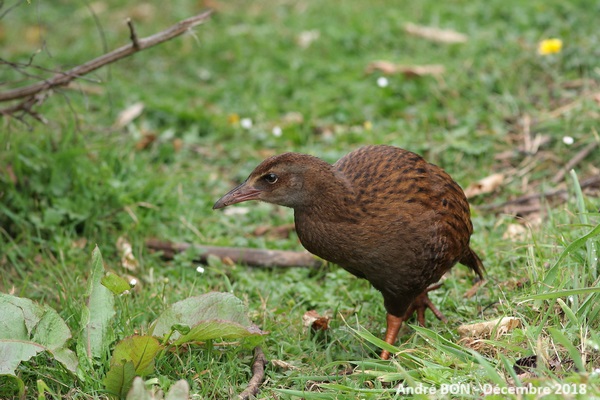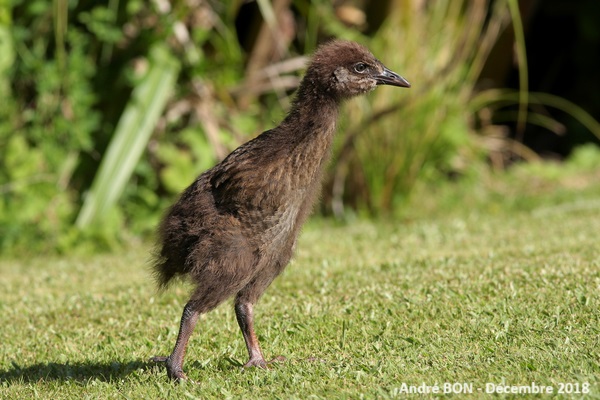


| Weka (Gallirallus australis (Sparrman, 1786)) |



|
|
Scientific name: Gallirallus australis (Sparrman, 1786) Common name: Weka French name: Râle wéka Order: Gruiformes Family: Rallidae Size: Body size: 46 to 60 cm, Weight: 700 to 1000 g; Wingspan: 50 to 60 cm. Females are slightly smaller than males. Habitat: Various habitats, forests, bushes, swamps, beaches. Food: The Weka does not fly. It is an omnivore which feeds on the ground on small invertebrates, fruits but also on the eggs of other species nesting on the ground. Nesting: The nest is a cup of dry grass on the ground. There may be several clutches of 1 to 6 eggs per year. Migration: Sedentary. Geographic area: Endemic to New Zealand. There are four subspecies. Gallirallus australis australis is found in the west and north of the South Island, Gallirallus australis greyi is found on the North Island, Gallirallus australis hectori now extinct from the centre and east of the South Island, is found in the Chatham Islands where it was introduced and finally Gallirallus australis scotti is found on the Stewart Island. |
The Weka has a brown plumage streaked with black. The chin, chest and abdomen may have grey areas. The wings are short but the tail is quite long. The head has a broad grey eyebrow. The long, strong and pointed bill is pinkish in colour with a dark tip. The eyes are reddish and surrounded by white crescents. The strong legs are reddish. Females have paler bill tips. The species is in sharp decline due to the destruction of its habitat and the introduction of predators. |
| [To know more about the Weka] [Next picture] [Top] |

|
The tip of the bill is quite pale. Isn't this one a female? |
| [To know more about the Weka] [Next picture] [Previous picture] [Top] |

|
No need to wander through the wilderness to observe the Weka. This one was waiting for us in the parking lot, at the foot of the car. This opportunistic bird was certainly looking for some food left behind by visitors to the site. |
| [To know more about the Weka] [Previous picture] [Top] |

|
Juvenile. |